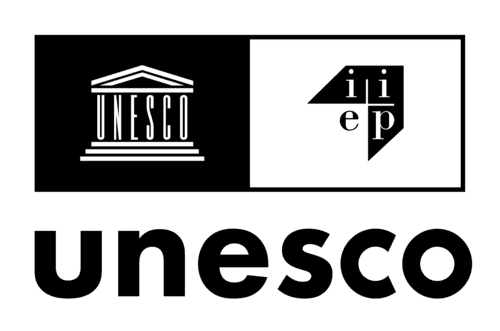Online learning has increasingly become a popular and mainstream form of teacher professional development across the globe—in rich and poor countries alike (Burns, in press).
It’s easy to see its appeal. It allows Ministries of Education to scale professional learning opportunities for teachers; teachers can access online courses via the mobile phone so many of them own; new content can be added at a low cost; and online learning can eliminate the financial and personnel costs of professional development as teachers can participate in trainings in their communities after school.
For many learners across the globe, such as women or people with disabilities, who may be unable to travel to in-person trainings because of cultural and physical constraints, online learning provides the flexible access to experts and professional interactions that that would be otherwise inaccessible in a non-networked environment. Teachers themselves appreciate the convenience, flexibility, and customizable nature of online learning (Burns, in press).
Convenience, access, choice, popularity, flexibility—online learning ticks a lot of boxes. But does it offer quality learning? That question is not so easily answered.
Online learning struggles, not just with perceptions of low quality, but with actual low quality (Global Education Monitoring Report Team, 2022; Diliberti, 2018). Without the formal mechanisms and institutions to assess their offerings, online learning programs have often escaped evaluation and oversight. Without a body of longitudinal and evidence-based evaluation data showing measurable impacts on teacher learning, online learning has struggled with perceptions of quality, impact, and effectiveness. And this absence of proof of quality has cascading effects on important global education goals. Why bother investing in online learning infrastructure if there’s limited evidence of its effectiveness? Why scale online education if that education is sub-optimal? Without quality as a keystone, the intersecting educational goals of equity and inclusion become diluted constructs.
Online learning’s quality imperative
Quality is an elusive and ill-defined term, but this blog defines it comparatively—how good something is, particularly in comparison to another item (as in online versus in-person learning). Quality also has elements of value, worth, impact, and effectiveness. As Education Development Center’s Distance Education for Teacher Training: Modes, Models and Methods, argues, online programs are not ipso facto high quality—they must be made so. Thus, as education policymakers and planners evaluate various online learning options for pre- and -in-service teacher education, they should insist that online programs adhere to the following elements and inputs:
Design according to standards
Quality begins with standards—minimum criteria that define what constitutes quality in each element of an online program. Standards frame the parameters of the online program—outlining goals and objectives and clearly specifying the skills to be acquired, learning methods used, all inputs and activities, and what and how technology should support learning.
There is an abundance of national and international standards to guide the design and development of online programs. UNESCO’s ICT Competency Framework for Teachers and Quality Matters are two examples of standards which specifically guide everything from the technology competencies of teachers and teacher educators to materials development to online program design.
Engage in a process of quality assurance
Standards are foundational to “quality assurance.” Quality assurance (QA) is the set of procedures that monitors performance against standards to ensure the achievement of quality outputs. QA typically focuses on planning, processes, and outcomes in order to identify, analyze, and eliminate any defects in processes and outcomes (Leahy et al., 2009). When implemented as intended, quality assurance can promote an ethos of continuous reflection and improvement within an online program or institutions managing these programs.
Quality assurance can be undertaken internally by the online program itself, or externally via a peer review process (for example by a government) or by an accreditation agency, such as the International Accreditors for Continuing Education and Training. Such a process assures policymakers, the public, and learners that there are standards ensuring program quality, that they guide inputs and activities, and that there is a functioning system assuring quality compliance. Learners who graduate from accredited online programs have greater opportunities for employment, continued education, and mobility (Distance Education Accreditation Commission, 2022).
Rigorously evaluate the online program
While quality assurance looks at adherence to standards; evaluation looks at impact and worth, both key elements of quality.
Continual monitoring and rigorous, well-designed, and implemented evaluations are critical to the success of any online education program. They inform policymakers, planners, and funders about the value and merit of distance programs. Evaluations can improve programs and determine which ones should be maintained, changed, closed, or scaled. They provide insights into a particular program, generate knowledge, and help educators generalize or predict future behaviors or outcomes in similar situations in order to scale up innovations (Patton, 2008).
Without well-designed and rigorous evaluations, online programs cannot make claims about the effectiveness of their intervention. Without evaluation, policymakers have no idea whether an online education program really works. The benefit of knowing which programs work and which do not—and which elements of an online program work, for whom, and under what conditions—is an important public good.
Employ qualified online instructors
Finally, online learning does not eliminate the need for good teaching; it amplifies it. Despite the presence of multiple versions of online teaching standards and the near universal acknowledgement that good teachers matter—even online—online learning programs have often struggled to find instructors who know how to teach well online. More damaging still, the majority of programs use online instructors who have never been prepared to teach online (Archambault and Kennedy, 2018).
Research is clear that, as in in-person teaching, a caring and competent online instructor is the greatest determinant of an online learner’s success. Thus, programs must prepare and support online instructors to teach online. This preparation, at the very least, should include technology training; a focus on helping online instructors develop online teaching skills, such as promoting interaction between instructors and learners and demonstrating strategies to encourage active learning, participation, and collaboration in the online environment; and providing clear expectations to learners, facilitation techniques, and feedback strategies.
The attraction of online education for many policymakers is that it offers education at scale. In these economies of scale, the risk is that poor-quality programs force out high-quality ones, with teachers and students suffering as a result. Holding online programs accountable for explicitly designing for quality—using standards, rigorously evaluating their programs, employing a quality assurance framework, and ensuring that online instructors are qualified to teach online—is a good start to improving the overall quality of online learning programs.
References
Archambault, L.; Kennedy, K. 2018. Teacher Preparation for K-12 Online and Blended Learning. In K. Kennedy, & R. Ferdig, Handbook of research of K12 online and blended learning. (pp. 221-246). Pittsburgh, PA: Carnegie Mellon University: ETC Press.
Burns, M. (in press). Barriers and Supports for Technology Integration: Views from Teachers. Background chapter prepared for the Global Education Monitoring Report: Technology and Education. UNESCO.
Diliberti, R. 2018. Assessing Quality: Teachers' Perceptions of State Virtual School Courses. Doctoral dissertation, Oakland University.
Distance Education Accreditation Commission. 2022. The DEAC Handbook. Distance Education Accreditation Commission.
Global Education Monitoring Report Team. 2022. Non-state Actors in Tertiary Education: A Shared Vision for Quality and Affordability? UNESCO.
Leahy, M.; Thielsen, V.; Millington, M.; Austin, B.; Fleming, A. 2009. Quality assurance and program evaluation: Terms, models, and applications. Journal of Rehabilitation Administration, 33(2), 69-82.
Patton, M. 2008. Utilization-focused evaluation (4th ed.). Sage.


